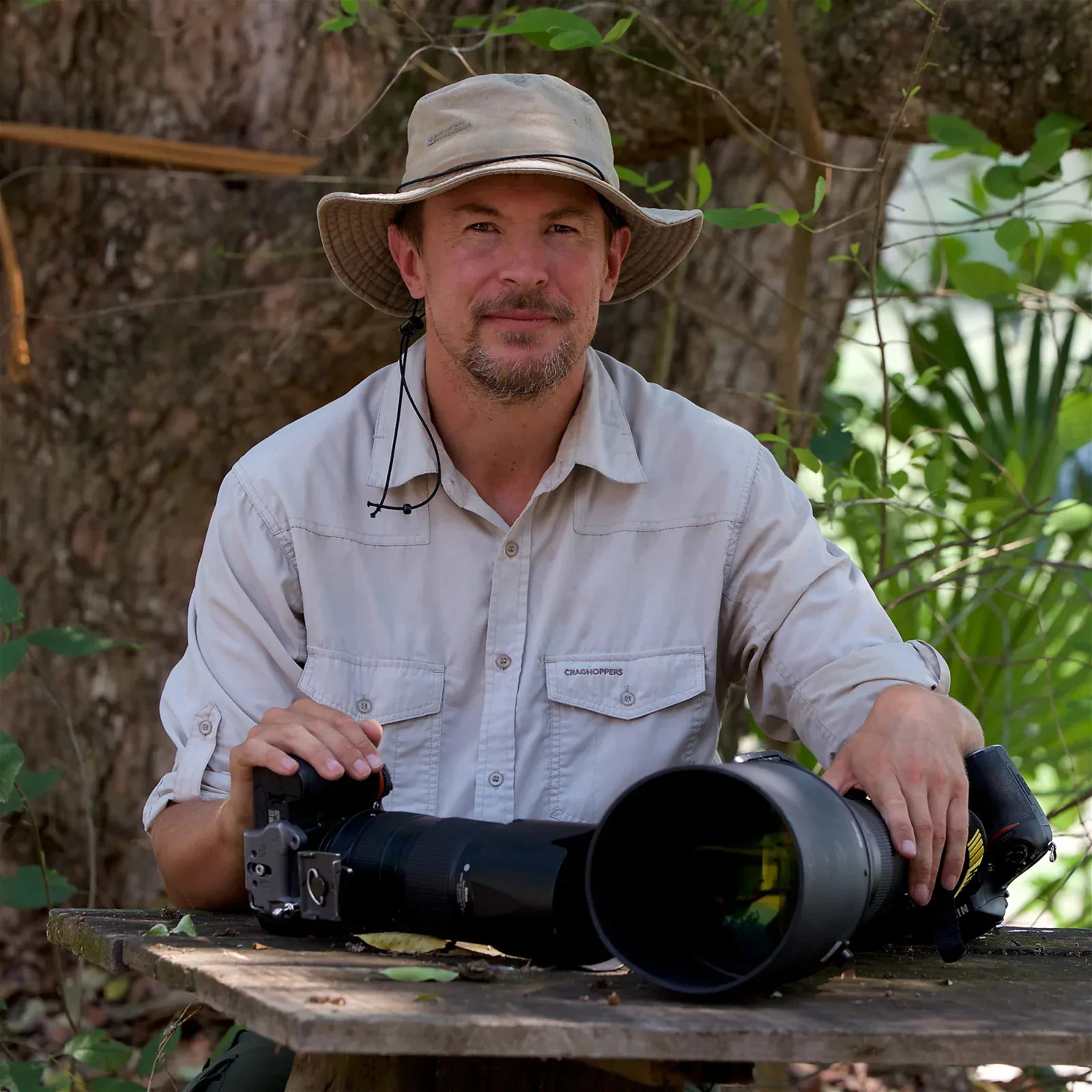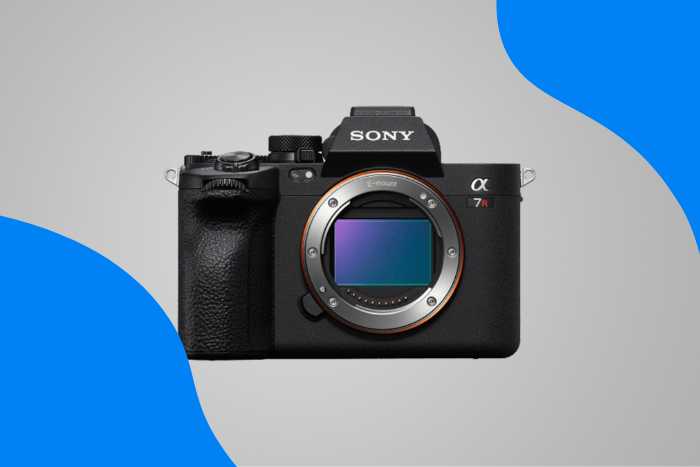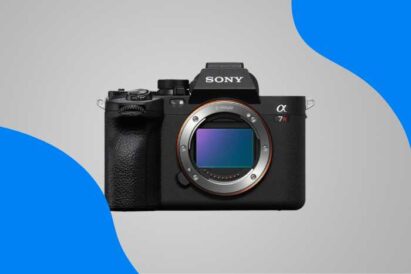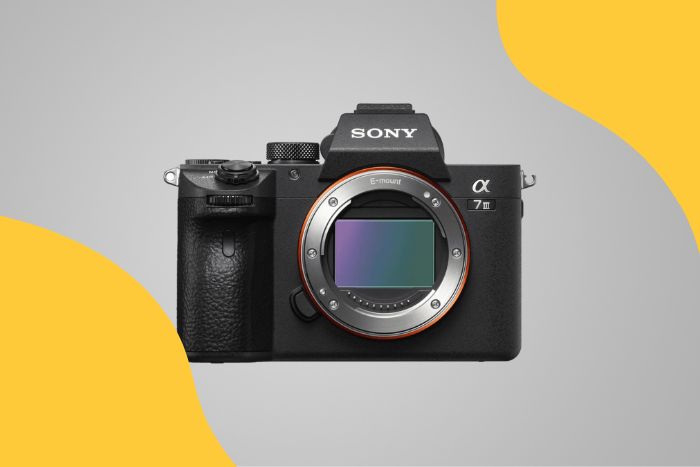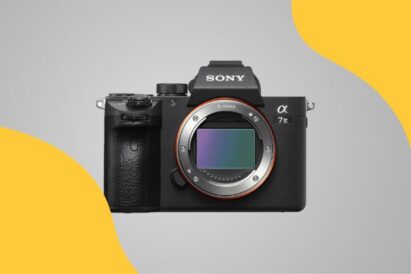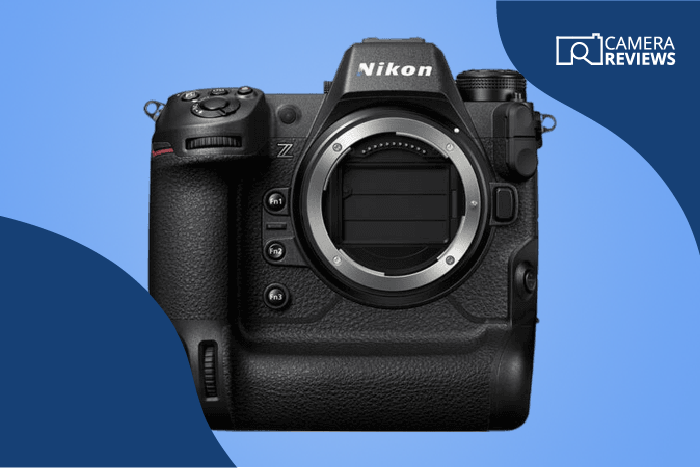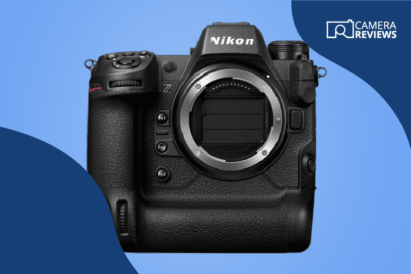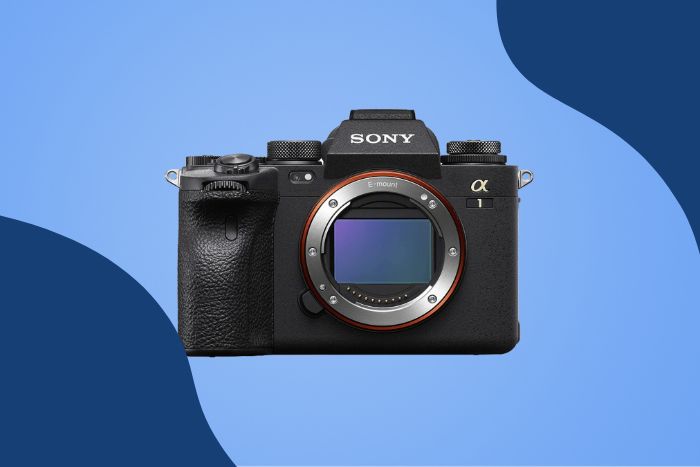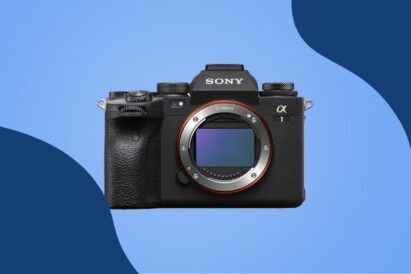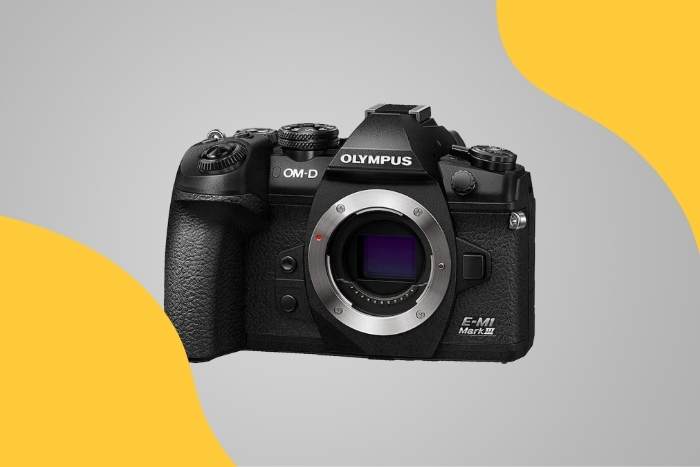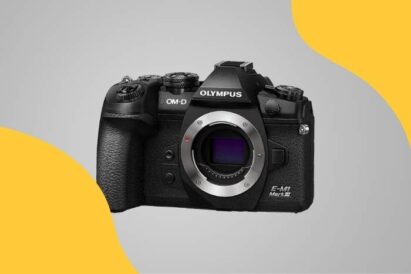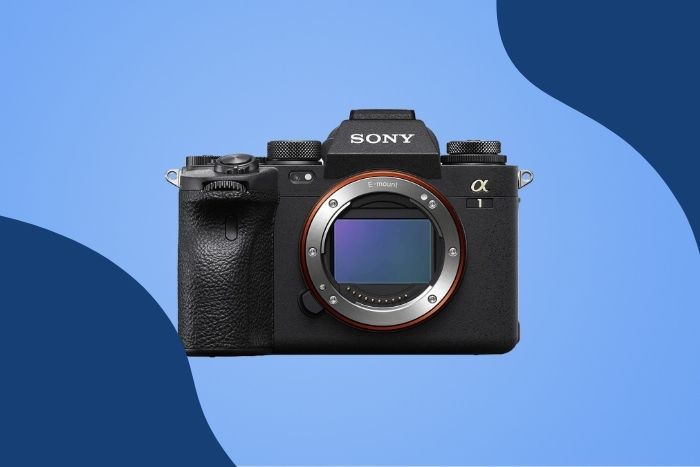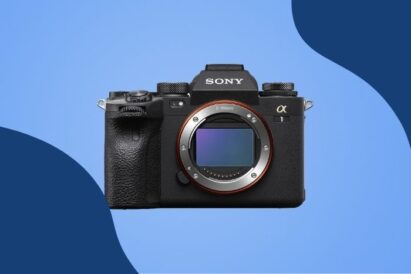If you’re just starting out in photography, you could do worse than choose a Sony camera for beginners. Sony has a good selection. You can get a compact camera, superzoom, or mirrorless camera with interchangeable lenses.
The best Sony cameras have excellent autofocus (AF) with face and eye detection. And they have high frame rates, many customization options, and 4K video recording. Our top choice is the Sony a6100. It has advanced features and a 22 MP sensor for a good price!
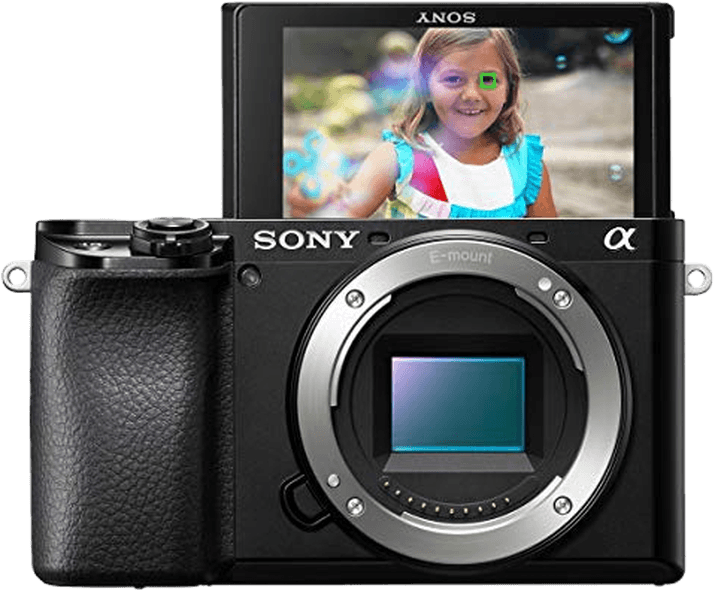
Sony a6100
What Is the Best Sony Camera for Beginners?
Which beginner mirrorless camera is right for you depends on your priorities:
- Wildlife photographers might want the Sony a6100 for its AF system.
- Vloggers and influencers might want a Sony ZV-10 for its video features and selfie-friendly display.
- Action photographers might want a Sony RX10 IV for the burst rate.
It’s up to you. So let’s look at a summary of all the best Sony cameras for beginners.

- Great value for the price
- Eye-detect autofocus for humans and animals
- Compact size
- 4K video option
- Flip-out touchscreen for selfies and vlogging
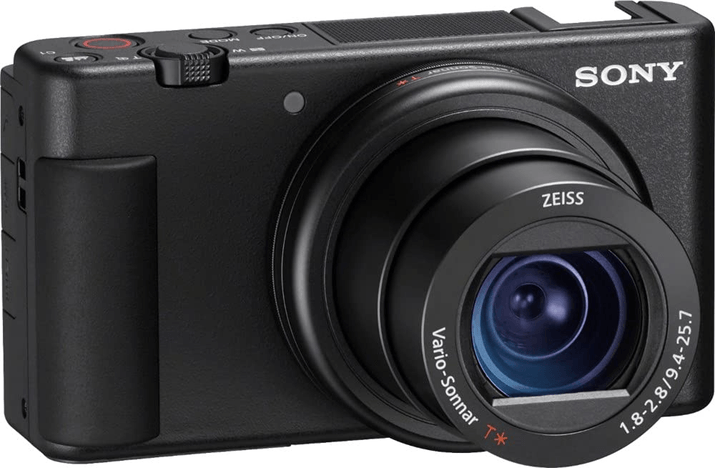
- Compact body
- Excellent eye-recognition AF
- Rotating screen and viewfinder
- Has a forward directional mic
- Additional external mic port
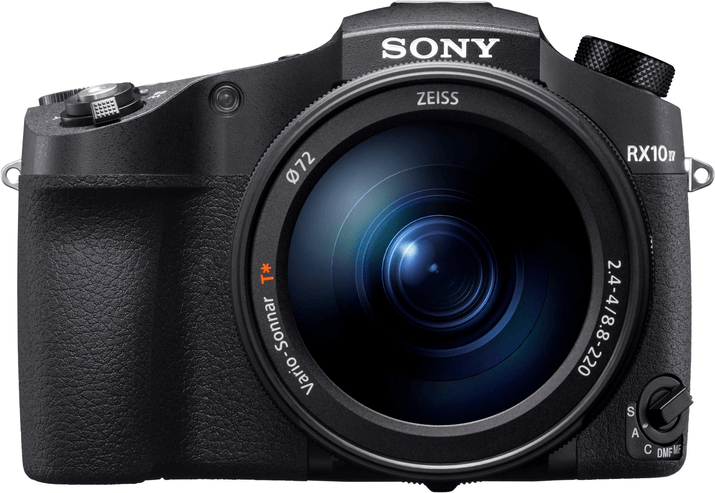
- Impressive 24 fps maximum continuous shooting speed
- Crisp image quality
- Unrivaled lens for a bridge camera
- Incredible 24-600mm zoom range
- 4K video quality
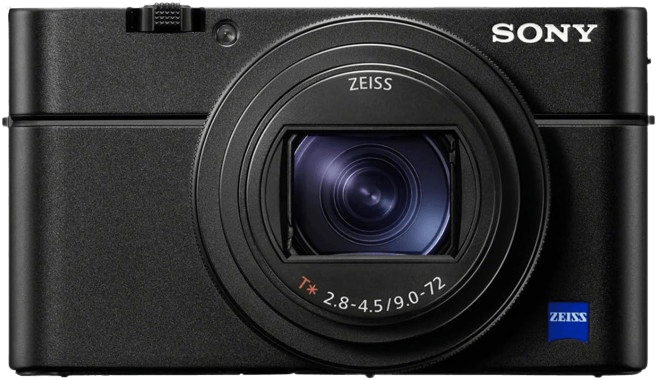
- Pocket-sized point-and-shoot
- High-quality Zeiss zoom lens with 8x zoom
- Advanced autofocus system with subject tracking
- Excellent 4K video performance
- Microphone jack for audio recording
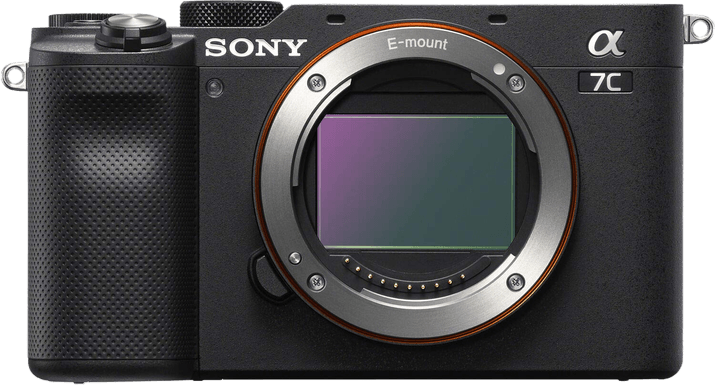
- Tiny, portable full frame body
- Excellent autofocus system
- Good battery life
- Weatherproof magnesium alloy body
- Option of bundling a lightweight 28-60 mm zoom lens kit
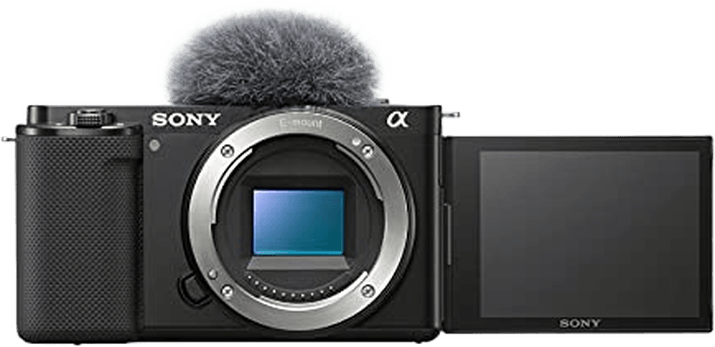
- Top-end autofocus system that's great with photo and video
- No time limit on video recording
- Fully articulating screen and selfie modes
- External microphones and headphones ports
- Compact and lightweight camera body
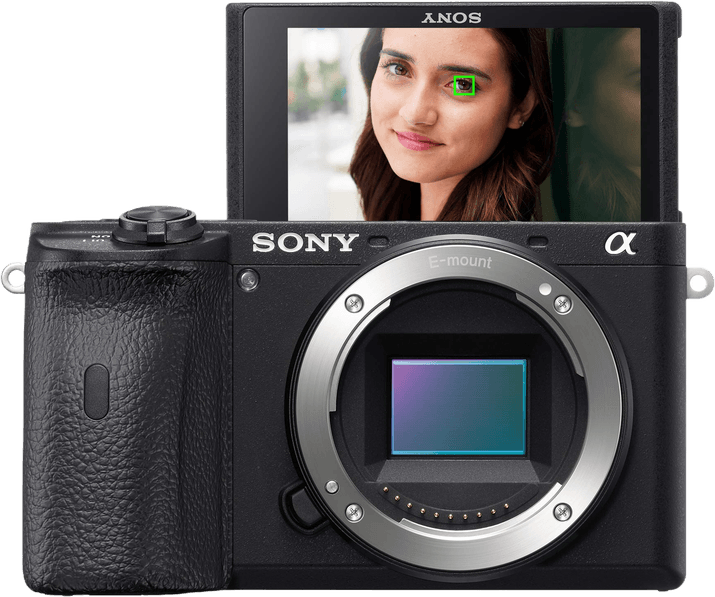
- Astonishing autofocus
- 5-axis in-body image stabilization reduces camera shake
- Silent shooting
- Terrific battery life
- Small, lightweight camera
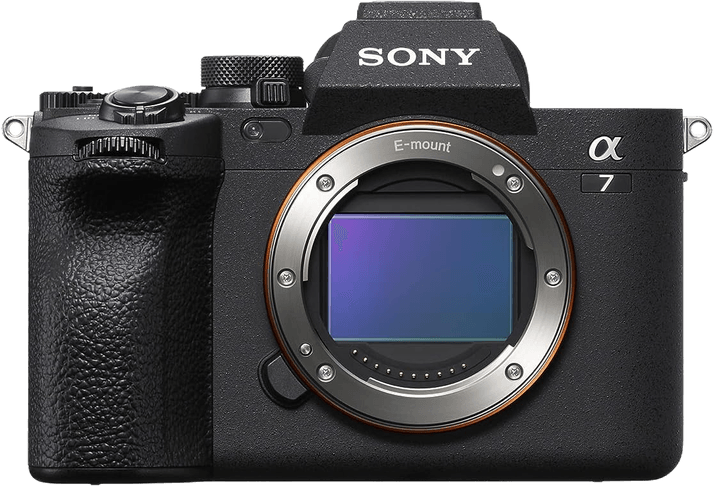
- Excellent image quality
- Super responsive autofocus
- 5.5 stops of image stabilization
- Fully articulating rear screen
- Powerful video capabilities (4K / 60p, 10-bit video) and live streaming
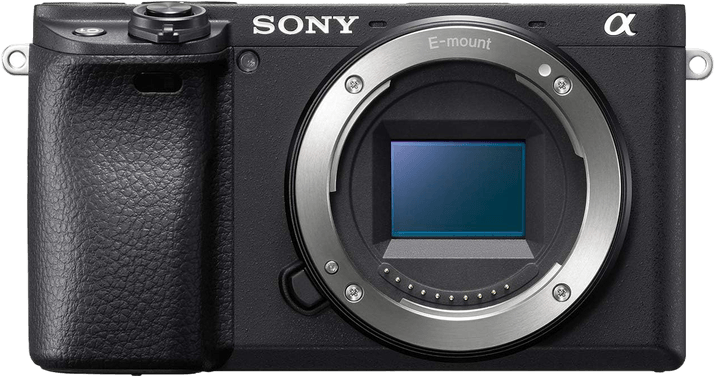
- Superb image quality for APS-C
- Good low-light performance
- Compact camera body
- No time limit for recording video
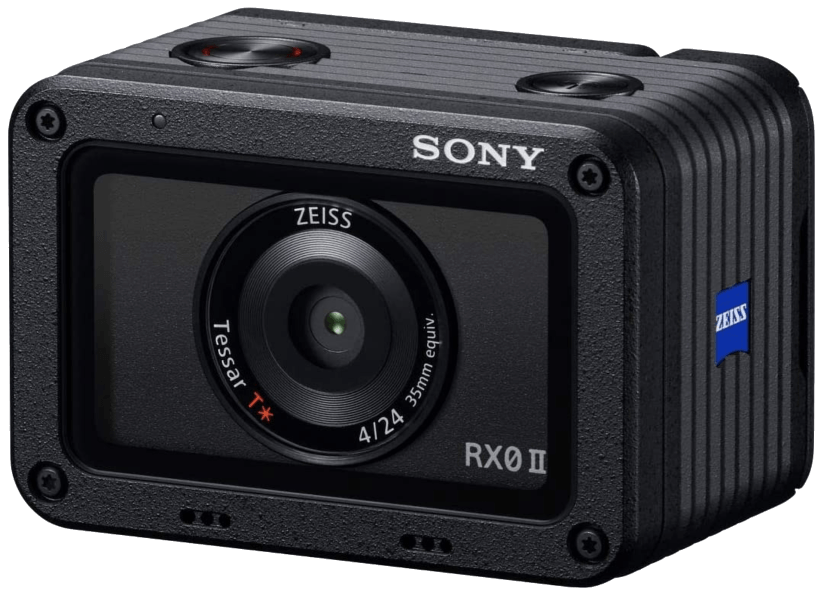
- Compact, weighing only 4.7 oz / 132 g
- Oversampled 4K video recording
- Super slow motion footage (1000 fps)
- 1/32,000 s max shutter speed
- Waterproof, shockproof, crushproof and dustproof
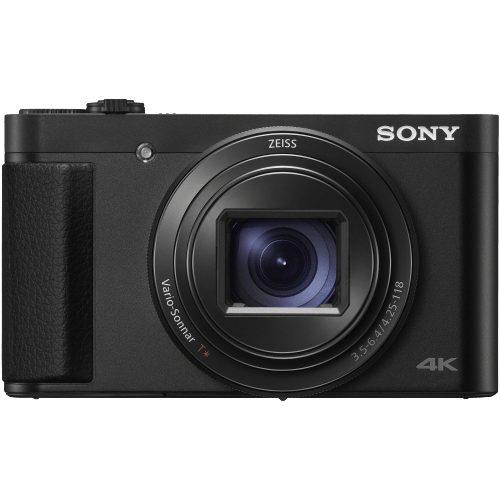
- Smallest travel zoom compact camera
- 24-720mm equivalent lens with 30x zoom range
- Face and eye detection AF
- Selfie-friendly tilting touchscreen
- 4K / 30p video recording
11 Best Sony Cameras for Beginners in Detail
Now let’s look in more detail at the features and benefits of each beginner camera.
1. Sony a6100

| Camera Type |
Camera Type
|
| Megapixels |
Megapixels
24 MP |
| Sensor Format |
Sensor Format
|
| Sensor Size |
Sensor Size
15.6 x 23.5 mm
|
| Frame Rate |
Frame Rate
11 fps |
| Autofocus Points |
Autofocus Points
425 |
- Great value for the price
- Eye-detect autofocus for humans and animals
- Compact size
- 4K video option
- Flip-out touchscreen for selfies and vlogging
- No in-body stabilization
- Low 1/4000 s max shutter speed
- No GPS
- Not weather-sealed
- No headphone jack
The Sony a6100 is a 24 MP APS-C mirrorless camera. It’s a small device that packs a lot of punch. RAW and JPEG image quality are excellent. And the AF system is powerful but easy to use.
It also offers a burst rate of 11 fps (frames per second), 4K video, and Wi-Fi with fast NFC for image transfer. And there are also plenty of customization options.
The battery life is good. And you can recharge via a USB cable—although there’s no external charger.
On the downside, there’s no front command dial. And it doesn’t have in-camera RAW conversion or in-body image stabilization (IBIS) to avoid camera shake.
Plus, the menus can be hard to navigate. And the touchscreen works differently for stills and video.
2. Sony ZV-1

| Camera Type |
Camera Type
|
| Megapixels |
Megapixels
20 MP |
| Sensor Format |
Sensor Format
|
| Sensor Size |
Sensor Size
13.2 x 8.8 mm
|
| Frame Rate |
Frame Rate
24 fps |
| Autofocus Points |
Autofocus Points
315 |
- Compact body
- Excellent eye-recognition AF
- Rotating screen and viewfinder
- Has a forward directional mic
- Additional external mic port
- Poor image stabilization
- Disappointing battery life with video
- Fixed lens is not a wide-angle
- Not all Mac operating systems support webcam software
The Sony ZV-1 is a compact camera with a 20 MP one-inch type sensor. It offers 24 fps shooting. And it has a 24-70mm equivalent f/1.8-2.8 fixed lens.
It doesn’t compare well with interchangeable-lens cameras. But this is a variation of the RX100 VA intended for vloggers. So its video performance is better.
Swapping between stills and video is easy, especially if you use the memory recall functions. You can choose from 4K / 30p, 1080p / 120p, and high-speed modes up to 960 fps.
You also get HLG (High Dynamic Range) and 8-bit Log for video. They provide a wider color gamut, dynamic range, and tonal range.
The 3.5 mm mic jack is handy. So is the directional three-capsule microphone with a windscreen.
You can also add the Sony GP-VPT2BT Bluetooth shooting grip that doubles as a tripod. But there’s no pop-up flash, built-in viewfinder, or headphone socket. The omissions are a surprise, given the target market!
3. Sony Cyber-shot RX10 IV

| Camera Type |
Camera Type
|
| Megapixels |
Megapixels
20 MP |
| Sensor Format |
Sensor Format
|
| Sensor Size |
Sensor Size
13.2 x 8.8 mm
|
| Frame Rate |
Frame Rate
24 fps |
| Autofocus Points |
Autofocus Points
315 |
- Impressive 24 fps maximum continuous shooting speed
- Crisp image quality
- Unrivaled lens for a bridge camera
- Incredible 24-600mm zoom range
- 4K video quality
- Expensive price tag
- Not an interchangeable lens camera
- No attached ND filter
- Slow autofocus in video mode
- Heavy for a compact camera
The Sony Cyber-shot DSC-RX10 IV is a superzoom (bridge) camera. It has a 20 MP one-inch stacked sensor and a 24-600mm equivalent f/2.4-4 lens.
This version adds the Sony a9‘s faster Bionz X image processor. And it features a 24 fps burst rate and a hybrid AF system with 325 phase-detect points. All this is ideal for sports or action photography.
You also get high-quality, oversampled 4K Ultra HD (UHD) video without pixel binning and high-speed clips at up to 960 fps.
Features include S-Log2 and S-Log3 support for a wider dynamic range. And there’s a gamma display assist to help check brightness levels.
You also get “zebra stripes” for quicker processing. It helps avoid white clipping (image areas with no digital information) and low-res proxy recording.
Plus, you can shoot with the electronic viewfinder (EVF) or the new 3-inch tilting touchscreen. And there are also built-in mic and headphones jacks, Wi-Fi, Bluetooth, and NFC connections.
All in all, this is the ultimate bridge camera. The only real problem is that you can’t use autofocus while zooming in on your subject.
4. Sony Cyber-shot RX100 VII

| Camera Type |
Camera Type
|
| Megapixels |
Megapixels
20 MP |
| Sensor Format |
Sensor Format
|
| Sensor Size |
Sensor Size
13.2 x 8.8 mm
|
| Frame Rate |
Frame Rate
5 fps |
| Autofocus Points |
Autofocus Points
357 |
- Pocket-sized point-and-shoot
- High-quality Zeiss zoom lens with 8x zoom
- Advanced autofocus system with subject tracking
- Excellent 4K video performance
- Microphone jack for audio recording
- Very expensive
- Image quality isn't great
- Not the best low-light performance
- No microphone jack
- No headphone jack
The Sony Cyber-shot DSC-RX100 VII is a small superzoom camera. It features a 20 MP one-inch type stacked sensor that limits rolling shutter. And there is a 24-200mm equivalent f/2.8-4.5 lens.
The RX100 VII can shoot short bursts at 90 fps—blackout-free at 20 fps. You also get Wi-Fi, Bluetooth, and NFC connections. And there’s a pop-up viewfinder and a flip-up touchscreen.
In terms of video, it offers oversampled UHD 4K footage and Full HD at up to 120 fps. There are also lower-resolution clips at up to 1,000 fps. And there’s a built-in mic input.
But the tilting touchscreen isn’t fully articulated. This means you can only shoot at waist level or over your head. Video recording is also limited, and there’s no gyroscopic stabilization or headphone socket.
5. Sony a7C

| Camera Type |
Camera Type
|
| Megapixels |
Megapixels
24.2 MP |
| Sensor Format |
Sensor Format
|
| Sensor Size |
Sensor Size
23.8 x 35.6 mm
|
| Frame Rate |
Frame Rate
10 fps |
| Autofocus Points |
Autofocus Points
693 |
- Tiny, portable full frame body
- Excellent autofocus system
- Good battery life
- Weatherproof magnesium alloy body
- Option of bundling a lightweight 28-60 mm zoom lens kit
- Only two customizable buttons
- Small electronic viewfinder
- No touchscreen menus
- Only has one memory card slot
The Sony a7C is a portable, full-frame mirrorless camera with a 24 MP sensor and optional kit zoom. It has five-axis IBIS and an 11 fps burst rate. And it has weather sealing, a selfie-friendly touchscreen, and good battery life.
It also has a hybrid autofocus system with Real-time Tracking. And it has Eye AF that works with both humans and animals. Plus, the AF system works well with video.
You get oversampled 4K footage at 30 fps (with a 1.2x crop) and 24 fps. Features include HLG, S-Log2, S-Log3, and Slow & Quick motion. (Watch Sony’s Slow & Quick motion video).
It also has high-speed capture in Full HD up to 120 fps. And there are 3.5 mm microphone and headphone jacks.
But you have to use your thumb for all three control dials. The old Sony menus are complex. And most settings apply to both stills and video. The latter means having to make several changes when switching between the two.
6. Sony ZV-E10

| Camera Type |
Camera Type
|
| Megapixels |
Megapixels
24 MP |
| Sensor Format |
Sensor Format
|
| Sensor Size |
Sensor Size
23.5 x 15.6 mm
|
| Frame Rate |
Frame Rate
11 fps |
| Autofocus Points |
Autofocus Points
425 |
- Top-end autofocus system that's great with photo and video
- No time limit on video recording
- Fully articulating screen and selfie modes
- External microphones and headphones ports
- Compact and lightweight camera body
- No sensor-shift stabilization, only a shake reduction system
- Visible rolling shutter effect with tracking shots
- The lack of a viewfinder is disappointing
- 4K video is cropped at 30 fps
The Sony ZV-E10 is a mirrorless camera targeted at vloggers. And it features a decent 24 MP APS-C sensor.
The burst rate is 11 fps, the battery life is excellent, and plenty of customization options exist. And you get Sony’s class-leading autofocus system for tracking faces and eyes.
You can shoot oversampled 4K video at 24 and 30 fps. But the latter is heavily cropped. And you can even live stream video over the USB-C connection.
You also get a fully articulating touchscreen, a Product Showcase (movie setting for reviews), and a Soft Skin effect for smoothing skin. And it comes with a three-capsule mic, and mic and headphone jacks.
Unfortunately, the mirrorless camera lacks a mode dial. And the video has one or two problems. Full HD isn’t very detailed. And 4K footage of moving subjects suffers from rolling shutter or “Jello effect.”
7. Sony a6600

| Camera Type |
Camera Type
|
| Megapixels |
Megapixels
24.2 MP |
| Sensor Format |
Sensor Format
|
| Sensor Size |
Sensor Size
15.6 x 23.5 mm
|
| Frame Rate |
Frame Rate
11 fps |
| Autofocus Points |
Autofocus Points
425 |
- Astonishing autofocus
- 5-axis in-body image stabilization reduces camera shake
- Silent shooting
- Terrific battery life
- Small, lightweight camera
- Slow buffer speeds
- Controls feel cramped with large hands
- Limited touchscreen controls
- No pop-up flash
- Rolling shutter recording video
The Sony a6600 is a mirrorless camera with a 24 MP APS-C sensor. It offers face and eye detection, Real-time Tracking AF, customization, and excellent battery life.
It can even manage a burst rate of 11 frames per second. These features make it a good travel, sports, or action camera.
The a6600 can capture 4K / 30p video footage. Plus, it has options for High Dynamic Range (HLG) or flat Log profiles for editing videos. And there are headphone and microphone ports to listen to and record audio.
The touchscreen tilts down 90 degrees or up to 180 degrees for selfies or vlogging. And you also get Bluetooth and Wi-Fi with NFC connectivity.
Unfortunately, there are a few drawbacks. You have to use your thumb to operate both command dials. And the buttons are fiddly. The menus are also long and hard to navigate. And there’s only one SD UHS-I memory card slot.
Finally, you get a noticeable rolling shutter in 4K / 24p video and a heavy crop at 30 fps.
8. Sony a7 IV

| Camera Type |
Camera Type
|
| Megapixels |
Megapixels
33 MP |
| Sensor Format |
Sensor Format
|
| Sensor Size |
Sensor Size
23.8 x 35.6 mm
|
| Frame Rate |
Frame Rate
10 fps |
| Autofocus Points |
Autofocus Points
759 |
- Excellent image quality
- Super responsive autofocus
- 5.5 stops of image stabilization
- Fully articulating rear screen
- Powerful video capabilities (4K / 60p, 10-bit video) and live streaming
- More expensive than the Sony a7 III
- 6 fps with 14-bit lossless compressed or uncompressed RAW files
- Significant distortion with moving subjects using a silent shutter
- Occasional issues with rolling shutter
- Requires a fast memory card
The Sony a7 IV is a mirrorless full-frame camera with a 33 MP sensor. It may be too expensive for a list of beginner’s cameras. But you can always look at a previous version or buy it used if you can’t afford it.
This camera can do almost anything. And the list of features is extensive.
Highlights include an IBIS system worth 5.5 stops and 10 fps shooting. And there are dual slots for fast CFexpress Type A and SD memory cards to help with this.
But the number of options doesn’t necessarily make this hard to operate. For example, the powerful autofocus system with eye detection and tracking is easy to use. The camera does almost all the work!
And the video capabilities make this a true hybrid camera. It can shoot full-width, oversampled 4K footage (from 7K) up to 30 fps. Or you can record 4K / 60p (from 4.6K capture) in Super35 / APS-C mode.
And many video options include quality 10-bit capture and H.265 compression that’s great for streaming. And many video settings have the S-Cinetone color mode for a nice cinematic look.
The main problem might be the complex settings. But if you avoid all the bells and whistles, this camera should be a good learning tool as you gain more experience. You can compare the a7 Iv with the a7III.
9. Sony a6400

| Camera Type |
Camera Type
|
| Megapixels |
Megapixels
24.2 MP |
| Sensor Format |
Sensor Format
|
| Sensor Size |
Sensor Size
15.6 x 23.5 mm
|
| Frame Rate |
Frame Rate
11 fps |
| Autofocus Points |
Autofocus Points
425 |
- Superb image quality for APS-C
- Good low-light performance
- Compact camera body
- No time limit for recording video
- No in-camera RAW image editing
- No in-body image stabilization
- Screen tilts but no further articulation
- Complicated menu system
The Sony a6400 is a mirrorless camera with a 24.2 MP APS-C sensor. And It sits between the a6100 and the a6600. It has a burst rate of 11 fps, a selfie-friendly touchscreen, good battery life, and plenty of customization.
The autofocus system has 425 phase-detect points and offers Real-time Eye AF and Tracking for humans and animals. So this model is a good option for travel, portrait, fast action such as skiing, skateboarding and sports photography.
The camera’s video capabilities are also impressive. It can capture 4K / 30p footage without pixel binning. There’s slow-motion 1080p. And it supports S-Log2, S-Log3, and HLG.
It also features zebra stripes, gamma display assist, and proxy recording. The latter creates smaller video files to more easily transfer them over smartphones or upload them to websites.
There’s also a mic input but no headphone socket. And you also get Wi-Fi with NFC and Bluetooth. Unfortunately, 4K / 30p video is cropped, rolling shutter is a problem, and exposure settings don’t carry over to video.
Also, there’s no IBIS system, the single memory card slot only supports slow SD UHS-I memory cards, and the ergonomics are hardly stellar.
10. Sony RX0 II

| Released |
Released
2019
|
| Megapixels |
Megapixels
15.3 MP |
| Field of View |
Field of View
84 |
| Max Video Resolution |
Max Video Resolution
|
| Slow Motion Speed |
Slow Motion Speed
|
| 360 Shooting |
360 Shooting
|
- Compact, weighing only 4.7 oz / 132 g
- Oversampled 4K video recording
- Super slow motion footage (1000 fps)
- 1/32,000 s max shutter speed
- Waterproof, shockproof, crushproof and dustproof
- Not geared towards still photography
- Small screen
- No GPS
- Problems with overheating
- Short battery life
The Sony RX0 II is a “go anywhere” mini action camera. It has a 15 MP one-inch type stacked sensor and a fixed 24mm equivalent f/4 Zeiss lens.
It’s shaped like a cube with a 1.5-inch tilting LCD. And it only weighs 4.7 oz (132 g). But it’s very durable! It’s dustproof, waterproof to 33 ft (10 m), shockproof from 6 ft 7 inches (2 m), and crushproof up to 200 kgf.
It has a burst rate of 16 fps and an anti-distortion shutter with a max shutter speed of 1/32,000 s.
But it’s designed for video. It records oversampled 4K that can be outputted over HDMI. And there’s super slow motion 1,000 fps footage.
Plus, the system is also modular. So you can link several cameras together for VR or filmmaking. This is the closest you’ll get to a GoPro action camera made by Sony. But it’s a shame there’s no built-in GPS.
11. Sony Cyber-shot DSC-HX99

| Camera Type |
Camera Type
|
| Megapixels |
Megapixels
18 MP |
| Sensor Format |
Sensor Format
|
| Sensor Size |
Sensor Size
6.17 x 4.55 mm
|
| Frame Rate |
Frame Rate
10 fps |
| Autofocus Points |
Autofocus Points
9 |
- Smallest travel zoom compact camera
- 24-720mm equivalent lens with 30x zoom range
- Face and eye detection AF
- Selfie-friendly tilting touchscreen
- 4K / 30p video recording
- No gyroscopic stabilization
- No weather sealing
- No Bluetooth connectivity
- No headphone socket
- No microphone jack
The Sony Cyber-shot DSC-HX99 is one of the market’s smallest travel zoom compact cameras. It has an 18.2 MP 1/2.3-inch sensor and a 24-720mm equivalent f/3.5-6.4 fixed lens.
Features include face and eye detection, a 10 fps burst rate with a 155-shot buffer, and five-axis image stabilization. It also has a flash and Wi-Fi with an NFC connection for fast file transfers.
The pop-up electronic viewfinder is like the one on the RX100 IV. And you can use the selfie-friendly tilting touchscreen.
There is also manual exposure control and a handy customizable control ring around the lens. And you get 4K / 30p video capture with full pixel readout, a built-in stereo microphone, and a mono speaker.
But the camera doesn’t have gyroscopic stabilization to help reduce movement like many other Sony cameras on our list. And there is no weather sealing, connectivity, or headphone or mic jacks.
Our Verdict
To recap, Sony cameras are excellent if you’re a beginner. The Sony camera brand offers the best mirrorless cameras on the market. And their AF systems are the best on the market. But the menus and ergonomics could improve in some cases.
Sony cameras for beginners also offer high frame rates, 4K video, and plenty of customization options. These are a few reasons why the Sony a6100 is our top choice.

Sony a6100
Sony Camera for Beginners Buying Guide
Which Sony camera you choose will depend on your personal needs and preferences. But there are options for every niche. There are ones for travel, wildlife, sports, or action photography.
Most Sony cameras for beginners have similar functionality these days. But you can choose a compact camera, superzoom, or mirrorless camera with interchangeable lenses.
Each has a different sensor size. And this will have a large impact on image quality, low-light performance, and price.
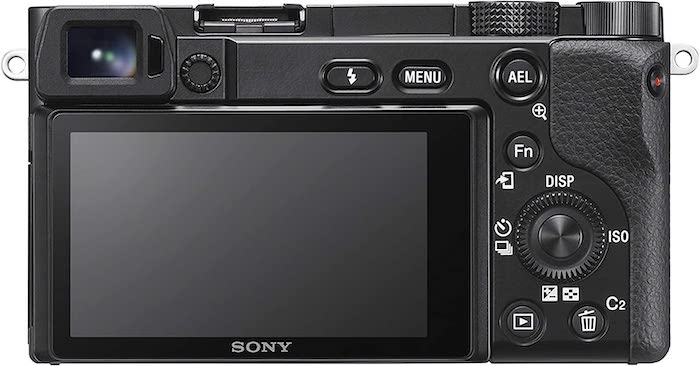
Beginner Sony Camera FAQs
We’ve answered the most frequently asked questions about beginner Sony cameras below. We hope this guide will help you make the right decision.
What Kind of Camera Is the Best for a Beginner Photographer?
Sony is a good brand if you’re a beginner looking for an entry-level camera. Which Sony camera you should go for depends on your preferred type of photography. The Sony a6100 has Eye AF and Touch Tracking suitable for wildlife and sports.
The Sony ZV-E10 has a selfie-friendly screen, IBIS, and Background Defocus for vlogging. The Sony a7C is a full-frame camera that’s small and light enough for travel photography. And there are many more Sony cameras.
Is Sony Good for Beginners?
Yes. Sony mirrorless cameras are good for beginners. These include compact cameras, also called point-and-shoots. You get blackout-free shooting, an AF system that covers the whole frame, and an intuitive touchscreen interface. If you’re used to taking pictures with your smartphone, transitioning to a Sony camera should be easy.
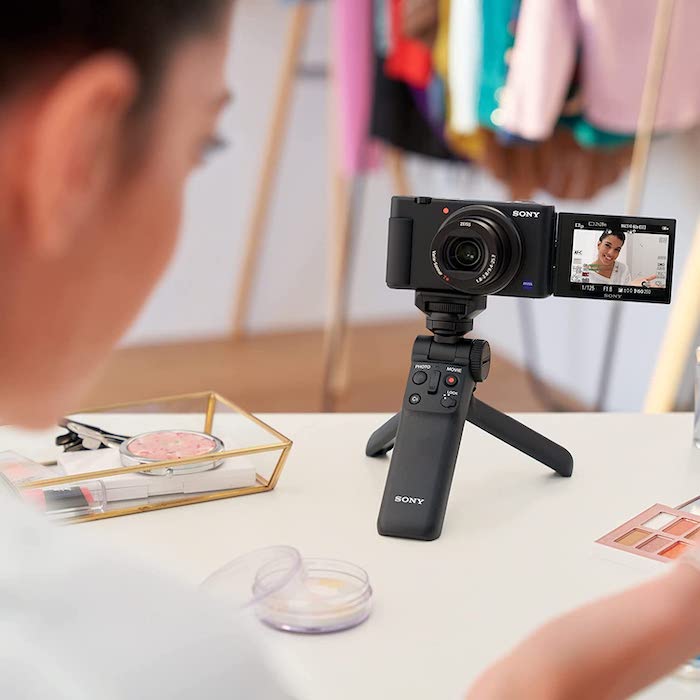
Which Sony Alpha Camera is Best for Beginners?
There are plenty of great Sony cameras to choose from. But the Sony a6100 probably comes out on top. It offers 11 fps, Touch Tracking, Eye AF, 4K / 30p video, and accurate color rendition with a special skin tone function for portraits. It also has Wi-Fi and Bluetooth for sharing your images with your friends and family.
How Do I Choose a Beginner Camera?
First, you must consider what kind of photographer you are and what shots you’ll take. What’s most important to you? Is it the sensor resolution, the autofocus system, the burst rate, or the video capabilities?
Whatever you’re looking for, a Sony camera should meet your needs.
Still unsure which camera to go for? Check out our articles on Sony vs Canon, Sony vs Nikon, or Sony vs Fuji cameras next! Or, our detailed Sony a7R III review or Sony a1 review will give you information on more advanced Sony models!

